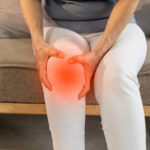by: December 22, 2024
 (NaturalHealth365) Slightly more than 20% of adults living in the United States suffer from chronic pain. Chronic pain makes it difficult to exercise, work, and even do simple things like get out of bed in the morning.
(NaturalHealth365) Slightly more than 20% of adults living in the United States suffer from chronic pain. Chronic pain makes it difficult to exercise, work, and even do simple things like get out of bed in the morning.
A new study published in Regional Anesthesia & Pain Medicine reveals belly fat is often the cause of chronic pain.
Why excess abdominal fat leads to chronic pain
The study referenced above highlights that excess midsection fat often causes widespread body pain, particularly in women. However, reducing fat in the abdominal and hip areas can be challenging since these regions are prone to fat accumulation.
An excess of fat above the waist and below the chest is strongly associated with chronic musculoskeletal pain throughout much of the body. This conclusion was drawn from an analysis of data from 32,409 participants in the UK Biobank, a longitudinal study investigating the impact of genetics and environment on health. The average age of participants was 55.
Participants underwent abdominal MRI scans to measure fat levels around the abs. This included visceral adipose tissue (VAT), the fat stored around internal organs, and subcutaneous adipose tissue (SAT), the pinchable fat beneath the skin. Pain assessments and MRI scans were repeated two years later.
The scientific explanation for this link centers on several key mechanisms:
- Inflammation: Excess visceral fat produces inflammatory cytokines, contributing to systemic inflammation that can lead to chronic pain, particularly in the musculoskeletal system. These inflammatory molecules can heighten pain perception and make the body more prone to discomfort.
- Fat distribution and hormones: Women tend to store more fat in the abdominal region due to hormonal shifts, especially after menopause. This visceral fat accumulation is linked to increased inflammation and greater pain sensitivity, which could explain the stronger association between abdominal fat and chronic pain in women.
- Mechanical stress: Abdominal fat adds pressure to the spine, joints, and muscles, causing discomfort and strain over time. This mechanical stress can lead to conditions like lower back pain and joint pain, which are often exacerbated by excess belly fat.
- Adipokines and pain sensitivity: Adipokines, proteins secreted by fat cells, play a role in pain perception. Higher levels of certain adipokines from excess abdominal fat can alter pain pathways, increasing sensitivity to pain and contributing to chronic discomfort.
The findings revealed that the link between abdominal fat and chronic pain was nearly twice as strong in women compared to men. These differences likely stem from variations in how fat is distributed across male and female bodies and hormonal differences between the sexes.
Surprising natural ways to reduce belly fat
You can reduce stubborn belly fat without grueling exercise routines. While regular exercise, particularly cardiovascular workouts, is effective for burning belly fat, it can also be hard on the joints. If you’re looking for joint-friendly alternatives, try swimming in a pool (without chlorine) or cycling instead of high-impact activities like running, jogging, or sports such as basketball and tennis.
Improving your gut microbiome is another natural and effective way to reduce belly fat. Certain foods, beverages, and extracts can enhance the gut microbiome, which plays a significant role in weight management. These include:
- Apple cider vinegar: Drinking one or two tablespoons of raw, unfiltered apple cider vinegar mixed with water each day offers the benefits of pectin and fermented apples. Pectin, a type of prebiotic fiber, helps stimulate digestion by clearing out unnecessary cholesterol in the stomach. It also encourages the growth of beneficial bacteria. Additionally, apple cider vinegar helps reduce bloating by aiding in food breakdown for better digestion.
- Green tea extract: Rich in bioactive compounds, green tea extract contains catechins – flavonoid antioxidants that boost metabolism, accelerate fat breakdown, and promote weight loss. The compounds in green tea extract help the body burn more calories, especially belly fat.
- Chia seeds: High in soluble fiber, chia seeds support a healthy gut microbiome and improve digestion. They also help regulate bowel movements and promote a feeling of fullness, which can aid in weight management.
- Intermittent fasting: Intermittent fasting naturally supports gut health by encouraging a “reset.” When you fast, you starve bad gut bacteria, which can help improve the balance of your microbiome and promote the growth of beneficial bacteria. This, in turn, can contribute to belly fat reduction.
Sources for this article include:
No hay comentarios:
Publicar un comentario